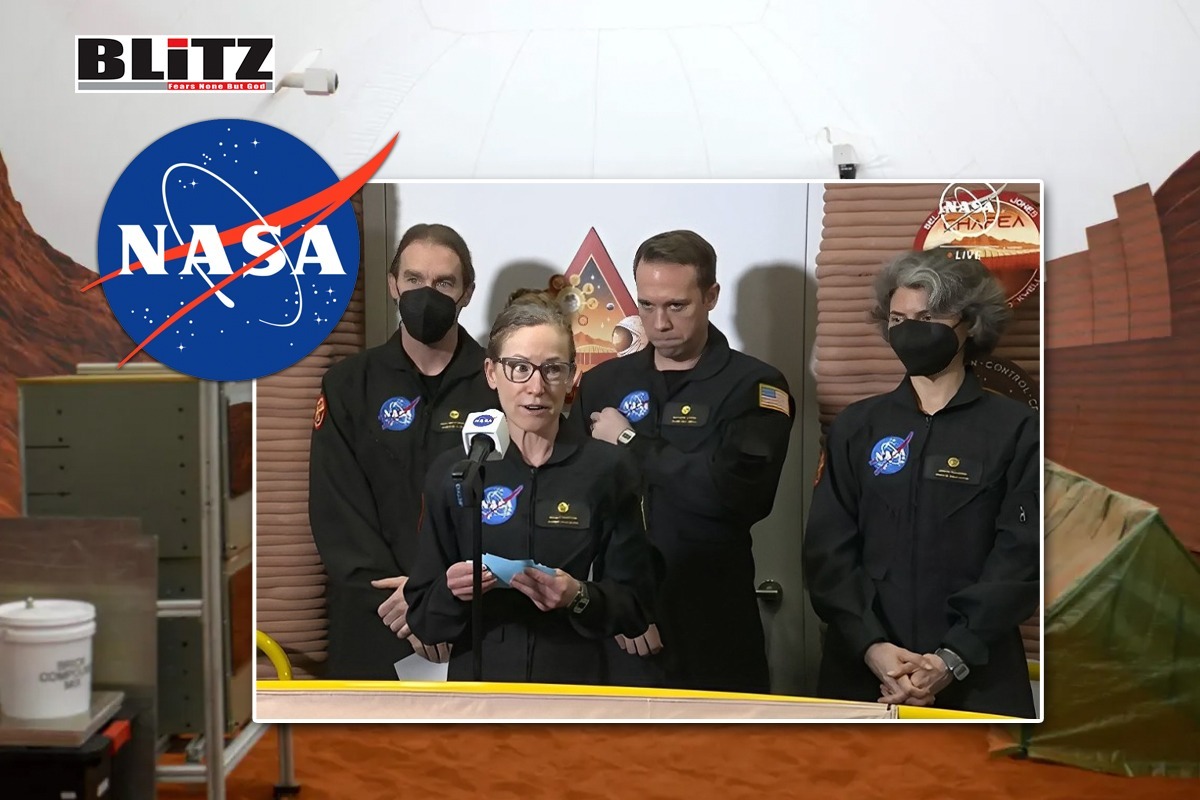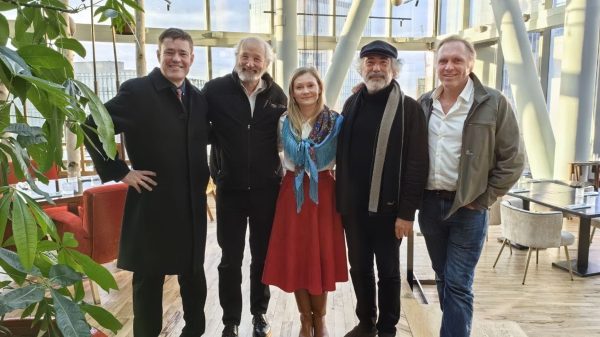NASA’s year-long Mars simulation mission concludes successfully
- Update Time : Tuesday, July 9, 2024

On a bright Saturday morning, a NASA astronaut knocked three times on a nondescript door and called out cheerfully, “You ready to come out?” The reply was inaudible, but the astronaut’s grin was visible beneath his mask as he yanked the door open. Cheers and applause erupted as four scientists, who had spent a year isolated from all other human contact, emerged. These scientists, Anca Selariu, Ross Brockwell, Nathan Jones, and team leader Kelly Haston, had just completed a 378-day mission simulating life on Mars inside a habitat in Houston, Texas. This endeavor was part of NASA’s research into the challenges and requirements for future human missions to Mars.
The mission was conducted in a habitat known as Mars Dune Alpha, a 3D printed, 1,700 square-foot facility equipped with bedrooms, a gym, common areas, and a vertical farm for growing food. This habitat served as the team’s home and workspace, providing a controlled environment to simulate the conditions they might encounter on Mars. Outside the main living area, an airlock separated them from a Mars-like outdoor section filled with red sand, where they donned spacesuits for “Marswalks.” Although still covered, this area allowed the team to practice the extravehicular activities they would perform on the Martian surface.
During their year-long mission, the team faced several “additional stressors” imposed by NASA to mimic the challenges of a real Mars mission. These stressors included communication delays with “Earth,” reflecting the time it would take for messages to travel between Mars and Earth, which could be up to 24 minutes each way. This meant that immediate communication with family, friends, and mission control was not possible, adding to their sense of isolation and confinement.
Despite the demanding conditions, the four scientists were beaming with joy and relief as they reemerged. Their hair was slightly more unruly, and their emotions were palpable. Kelly Haston, the team leader and a biologist, laughed as she greeted the crowd, “Hello. It’s actually so wonderful just to be able to say hello to you.” Nathan Jones, an emergency room doctor, nearly cried as he took to the microphone and spotted his wife in the audience. The moment was a powerful reminder of the human spirit’s resilience and the sacrifices made in the pursuit of scientific progress.
Steve Koerner, deputy director at NASA’s Johnson Space Center, addressed the crowd, expressing his gratitude for the team’s efforts. “They have spent more than a year in this habitat conducting crucial science, most of it nutrition-based and how that impacts their performance as we prepare to send people to the Red Planet. I’m very appreciative,” he said.
The mission, known as CHAPEA (Crew Health and Performance Exploration Analog), is the first of three planned by NASA. This series of missions aims to study the physical and psychological effects of long-duration space travel on humans, providing valuable data to help prepare for future Mars missions. A previous year-long Mars simulation took place in 2015-2016 in Hawaii, with NASA’s participation, but this is the first series of such missions under NASA’s direct leadership.
Throughout their time in the Mars Dune Alpha habitat, the team engaged in a variety of scientific experiments and daily tasks that would be essential for survival on Mars. They grew vegetables in their vertical farm, managed their food and water supplies, and maintained the habitat’s systems. These activities were designed to test their ability to live sustainably and independently, a critical aspect of any long-term mission to Mars.
One of the key areas of research was nutrition and its impact on performance. The team’s diet and health were closely monitored to understand how the limited and controlled food supply affected their physical and mental well-being. This research is vital for developing strategies to ensure astronauts remain healthy and perform optimally during extended missions in space.
In addition to the scientific work, the team also had to manage the psychological challenges of isolation and confinement. Regular communication with their families and friends was limited to mimic the delays that would be experienced on Mars, adding to the emotional strain. The ability to maintain mental health and cohesion as a team under such conditions is crucial for the success of future Mars missions.
NASA’s Artemis program, which aims to return humans to the Moon, serves as a stepping stone for the ultimate goal of sending astronauts to Mars. The knowledge gained from living and working on the Moon will help prepare for the challenges of a Mars mission. The Artemis program plans to establish a sustainable human presence on the Moon by the end of the decade, setting the stage for a journey to Mars sometime in the 2030s.
As the four scientists from Mars Dune Alpha return to their normal lives, the data and experiences they bring back will be invaluable. Their mission has provided a glimpse into the future of space exploration, highlighting the incredible dedication and resilience required to push the boundaries of human knowledge and presence in the universe.

















Leave a Reply